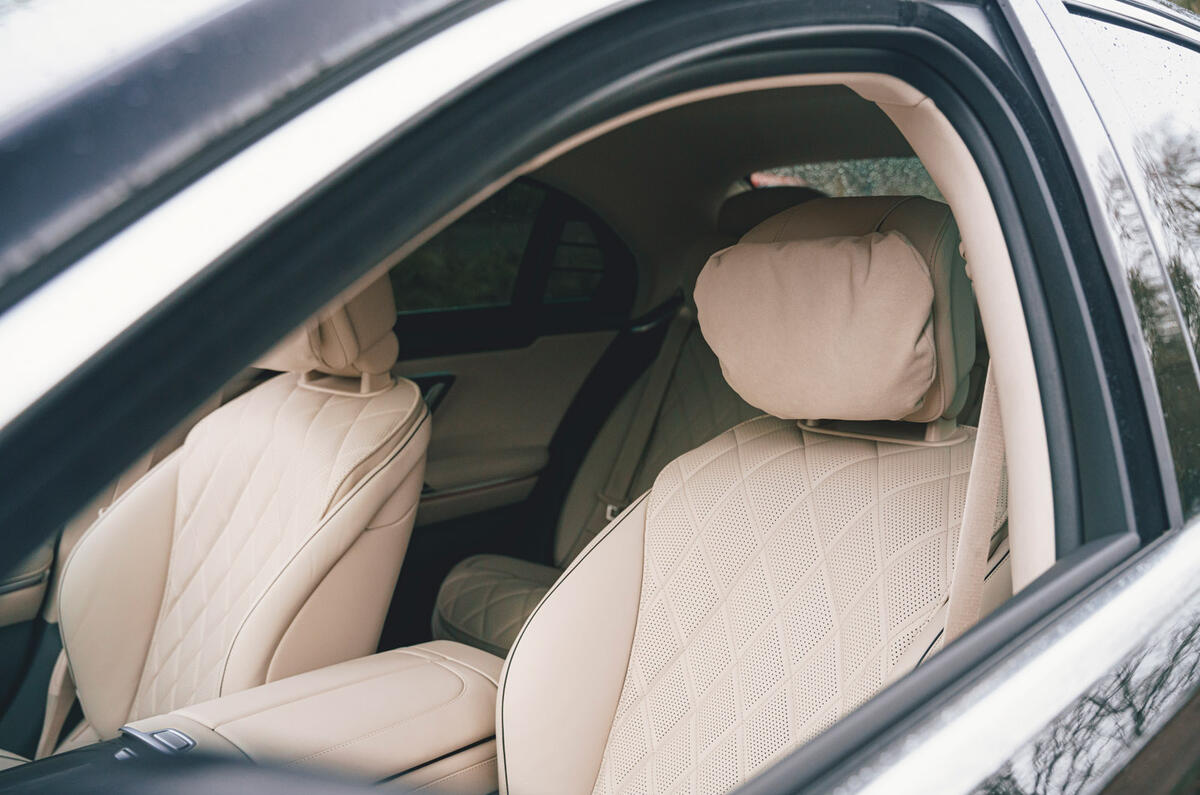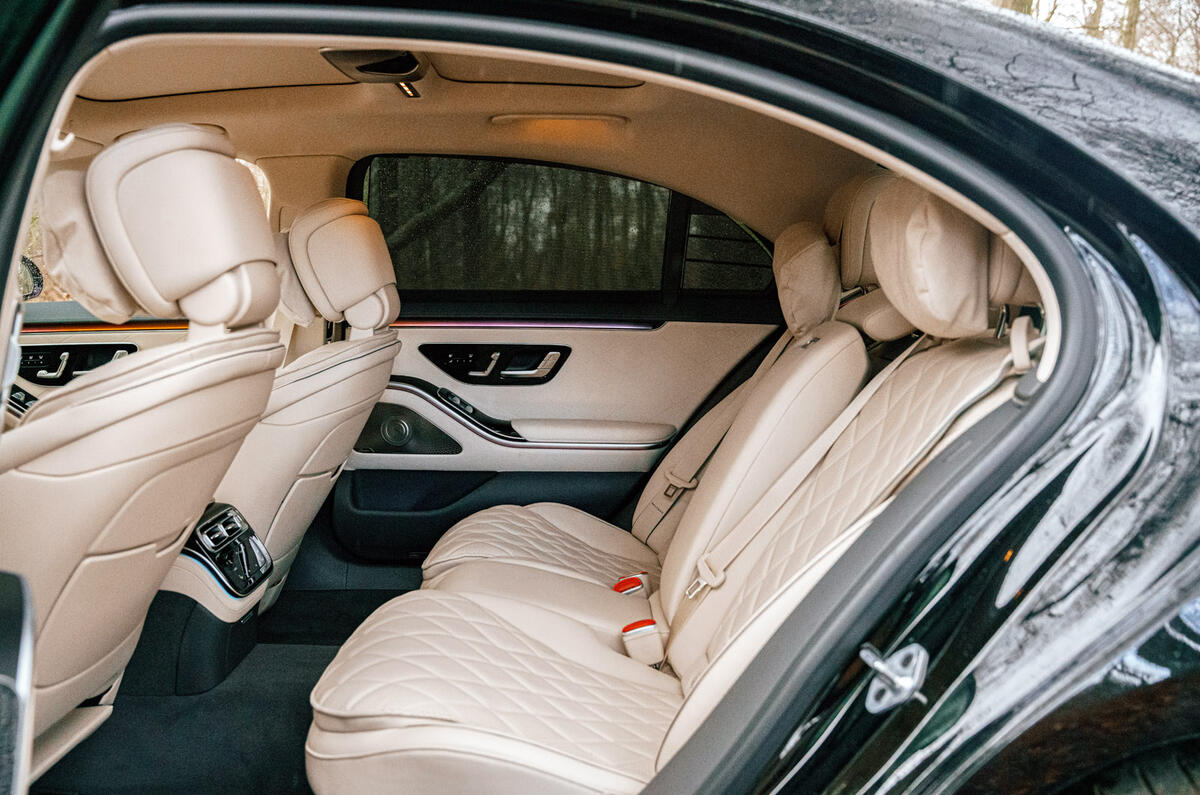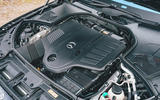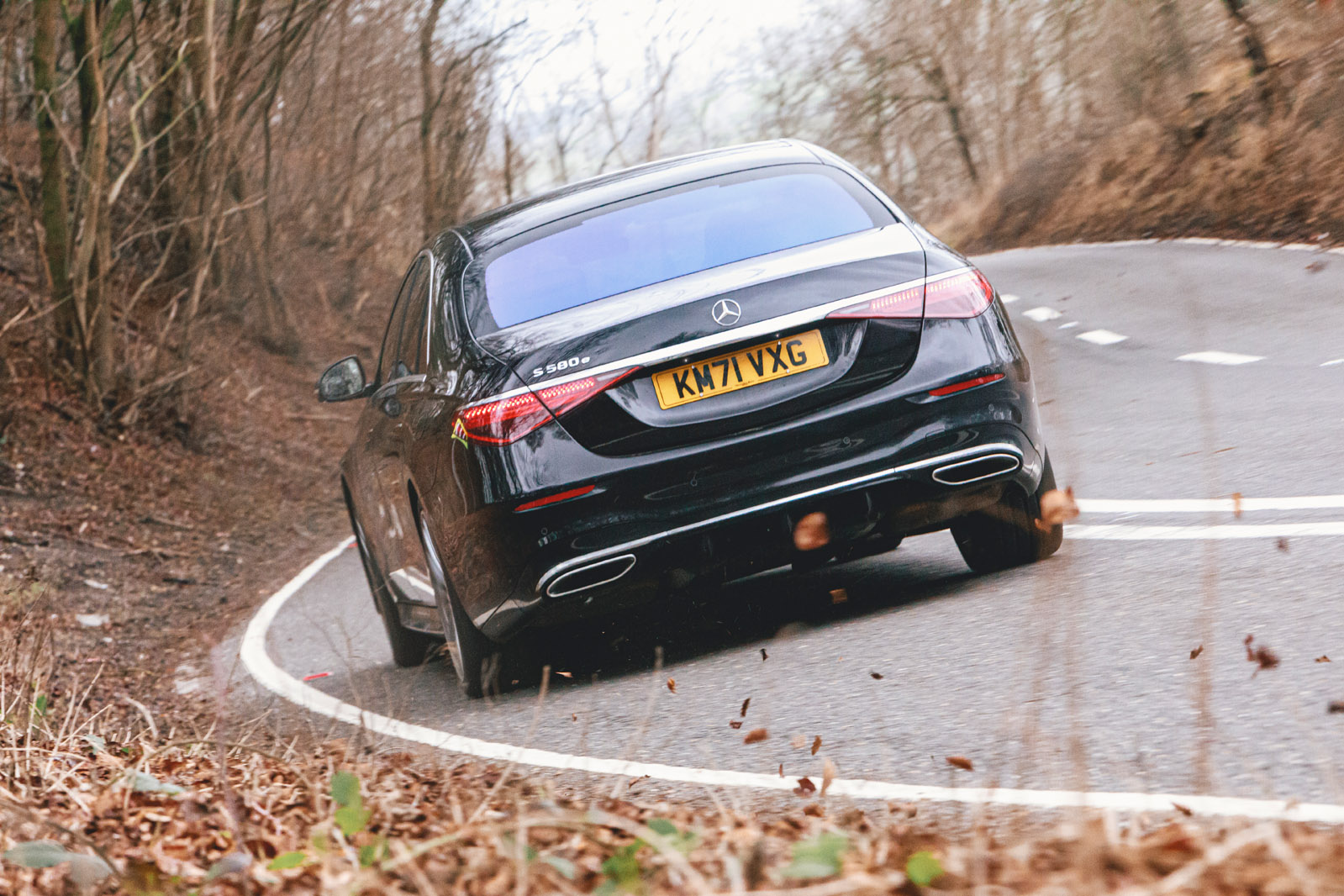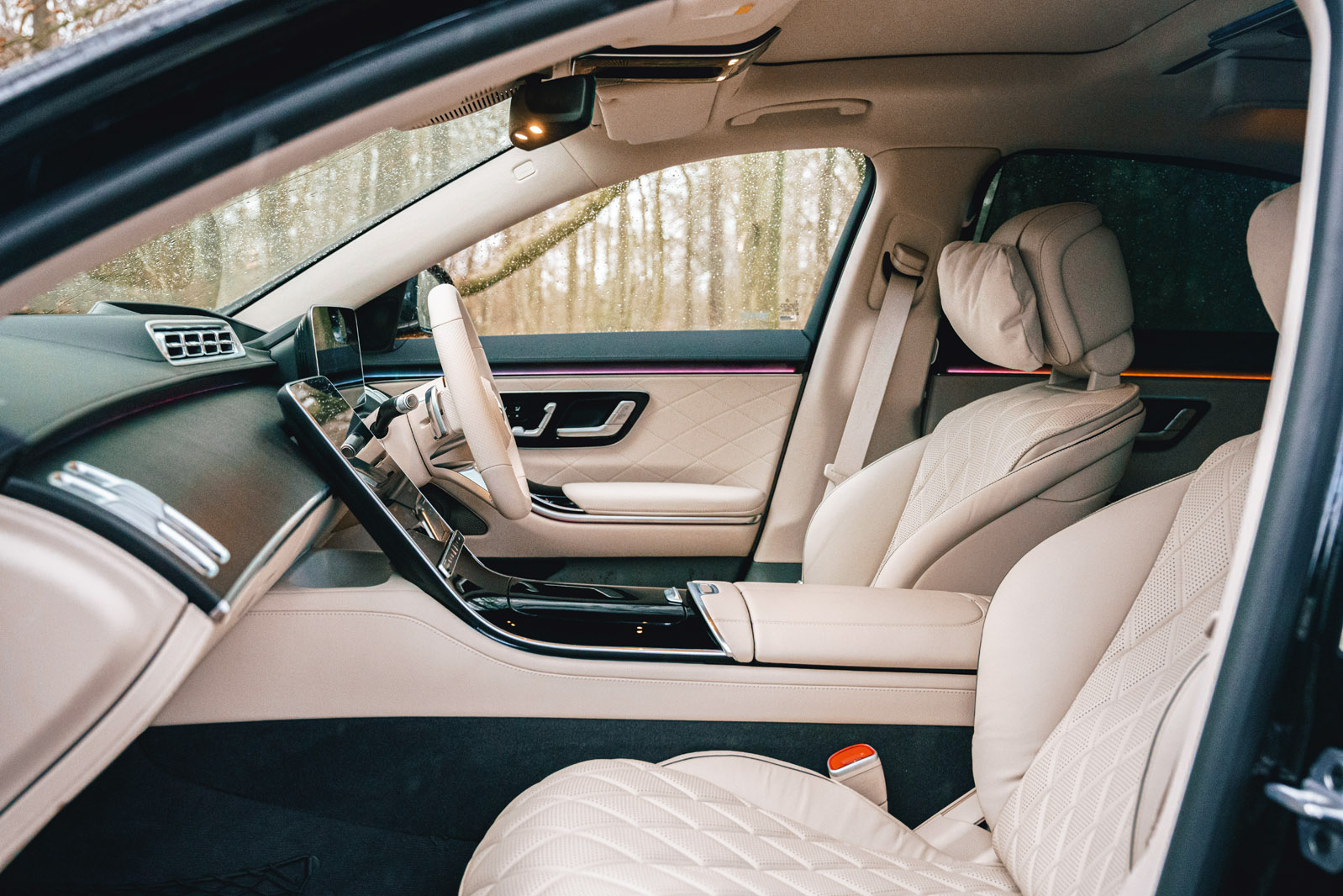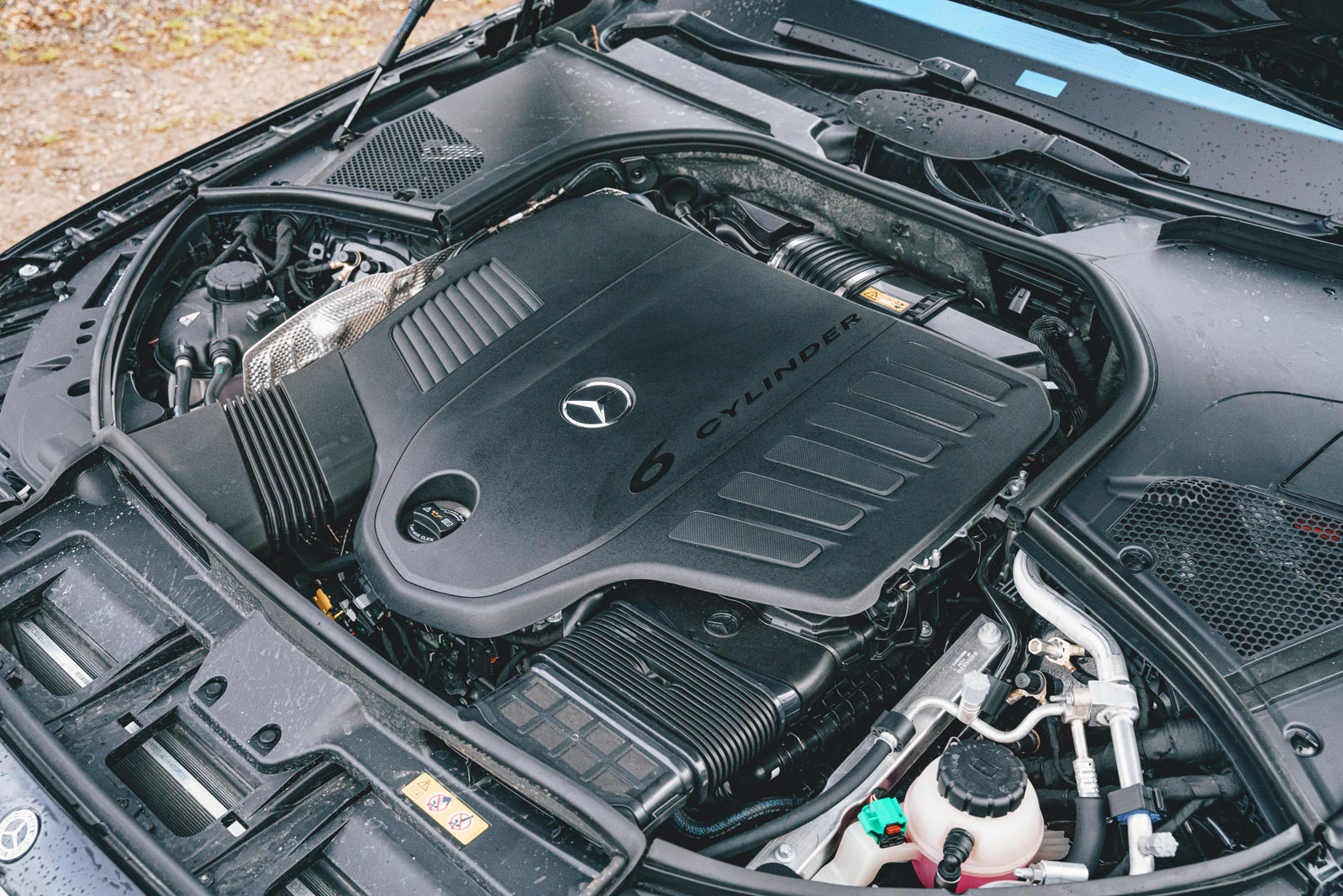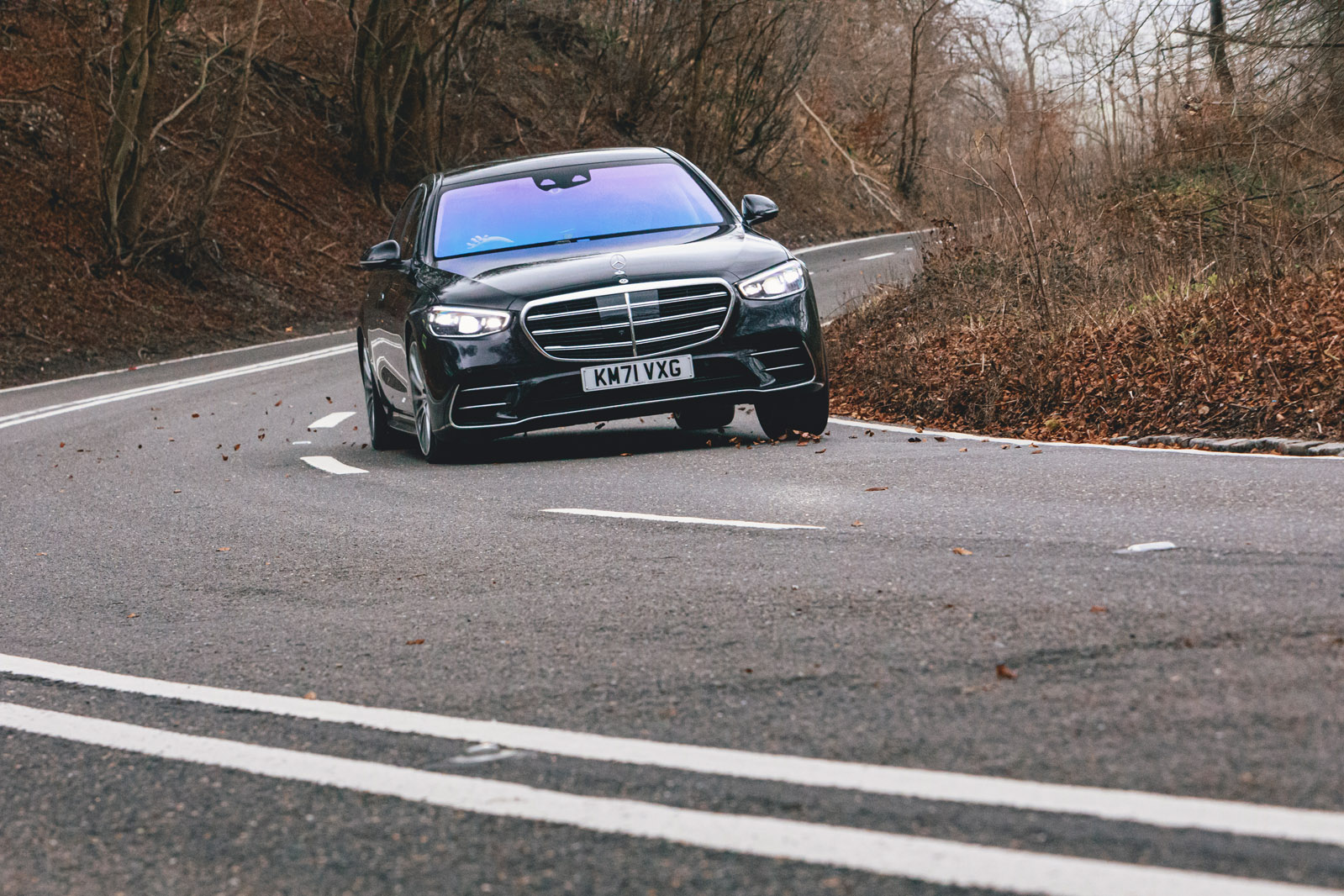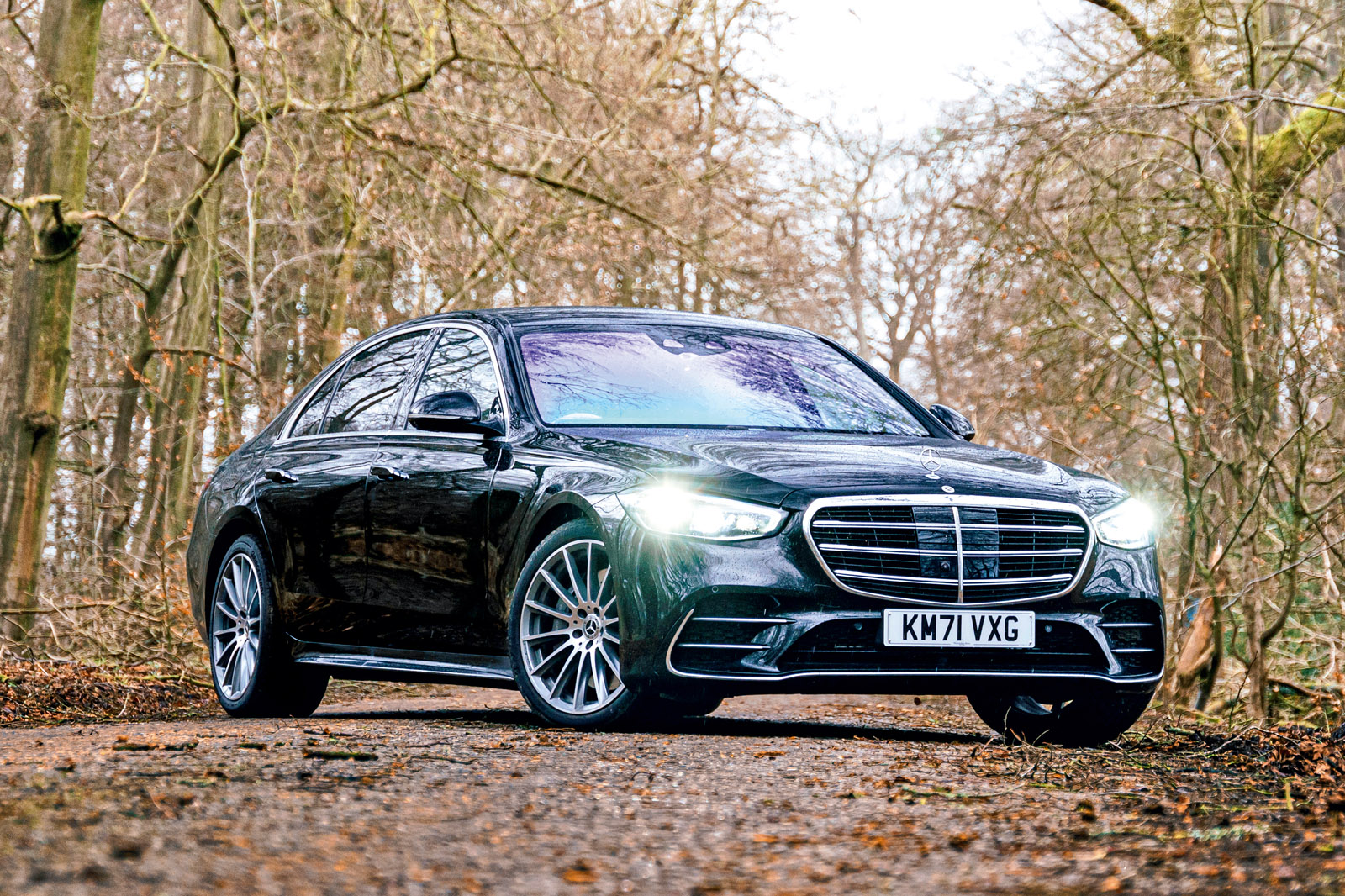Desperate to embrace digitisation but knowing it had to retain a familiar and uncompromisingly opulent lounge-like feel, Mercedes-Benz set itself a stern task when it came to developing the cabin of the S-Class.
It has, in the main, succeeded in blending those elements. The surface design of the dashboard is particularly pleasing, and in general the cabin achieves a greater sense of spaciousness than its predecessor but without sacrificing anything in material richness or feelings of all-encompassing solidity and sanctuary. It surpasses the cold ambience of the Audi A8 on every level, does enough to better the beautifully constructed confines of the BMW 7 Series, and gets the better of the Bentley Flying Spur in terms of visibility and airiness, if not tactility and flair.
At night, things arguably only get better, when Mercedes’ ambient lighting programme comes to life. It’s a triumph, being configurable for colour and brightness and transforming the cabin into a luxurious and sophisticated cocoon. Heightening the experience are the seats. The deeply bolstered items in the front strike a rare balance of breadth, support and softness, and are among the best in any class of car.
There are also 10 massage programmes. The rear is no less impressive, particularly in LWB cars, which get electric adjustment for the outer seats. A Chauffeur Pack, fitted here, adds deployable footrests and gives the front passenger seat the ability to slide and fold extra far forward. Electric blinds add a further layer of insulation from outside.
Faultless? Not quite. The near-total migration of switchgear onto the central touchscreen makes it more arduous than necessary to alter the climate control settings. Of the physical controls that exist, some also feel cheap. The wing mirror adjusters are one example, the engine start button another.
The size of the display has also necessitated putting the central vents high on the dashboard, out of easy reach, and the door-mounted electric seat controls aren’t haptically satisfying to touch but strangely stiff and recalcitrant. Small details, admittedly, but ones that take the shine off an otherwise fine and typically lavish effort.
Mercedes-Benz S-Class infotainment and sat-nav
The sloped central touchscreen that forms the nexus of the MBUX infotainment system in the S-Class is neither as offensively large nor as distracting in real life as the early pictures might have led you to believe. It is instead a beautifully crisp, clear display that contains an intuitive array of menus, sits at just the right height and is particularly well suited to integration with Android Auto and Apple CarPlay.
It’s joined by a 7.0in tablet in the rear armrest, and higher-spec cars get wireless phone charging pads both in the front and back, to go with eight USB-C ports. Of course, physical controls are scarce, including those of the climate control, and in this regard the iDrive set-up in the 7 Series is more intuitive to use on the move.
Elsewhere, the voice recognition is right at the sharp end of what the car industry is currently capable of delivering and the head-up display is able to effectively deliver augmented reality navigation.

















